Discussions regarding what original chow colors were in China have come up many times over the years, s0 when I ran across this article in my collection today to clarify that only solid colors, with possible shadings on the britches and tail have ever been acceptable in all countries and registration systems, I thought it would be of great benefit to those researching the oldest of the old color theories. The author had extensive conversations with Mr Taunton (Walter Kelsey Taunton 1844 – 1927) who was a pioneer in importing the Chow breed from China. He owned the first chow to be exhibited at Crystal Palace in England in 1880…. a black bitch called CHINESE PUZZLE
Since the very first CHOW STANDARDS were penned in 1906, both the English and American versions have stated only solid colored chows are acceptable, with the most recent Chow Standard stating only 5 distinct colors can be registered. Those being RED, BLACK, BLUE, CINNAMON (or fawn), AND CREAM. Over the years the breed has seen short lived “fads” of non conforming colors or “uniques” such as parti colored, piebald, black and tan and brindle striped, and blue merle chows being marketed to the public. These colors most often indicate mixed breed heritage and have never been a part of the Official Chow Chow Breed Standard in any country, at any time, and cannot be given a registration number as one of the unorthodox colors in purebred registries.
Additionally, the blue merle gene can carry with it a host of health issues including deafness and blindness ……. buyers, please do your research and talk to multiple breeders, your veterinarian, and your local purebred breed clubs about your potential new addition before purchasing. Also, be aware that NO COLOR IN THE CHOW BREED IS CONSIDERED ANY MORE VALUABLE THAN THE OTHERS.
Mr. Taunton’s black chow bitch “Chinese Puzzle”
I would imagine this article reflects pretty accurate reporting as Mr Taunton was an authority of the Chow Breed in his day. I have a few more pre 1900 articles I will add to this page when I find them again that state the same color ideas so one can view a nice cross section of reports (and opinions)
ARCHIVE NOTES BELOW-BOLD UNDERLINED TEXT CLICKS TO ARTICLES
- Both CHOW VIII and BLUE BLOOD mentioned have their own profile pages you can read
- The mention of the “black tinged or mixed up brown called “bronze” perked my ears up, as I wrote an article about BROWN CHOWS
- BLUE CHOWS also get their share of press in this article, as well as what the author refers to “so called cream” and WHITE CHOWS
- Note that the bright red , maybe what we call mahogany red today, is mentioned as becoming rare and hard to find this early on as breeders started “manufacturing” colors
- Deducting from other articles I have where the term “patched” is used regarding chows, it described a shaded dog, either blue or red for the most part, who bear very distinct lighter shadings on the britches , chest and tail, yet those colors are blended with the main body color. The famous CHOW VIII as perfect of a chow as could be, was faulted at the turn of the century by many for his lighter patches on his britches .
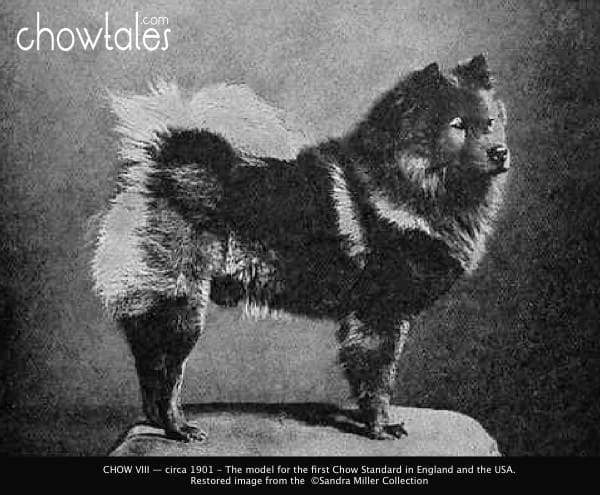
THE ARTICLE CONTINUES WITH WHAT BECAME THE FIRST 1906 CHOW STANDARD BASED ON CHOW VIII
It is important to note that in 1925 the references to the various colors was removed from the 1925 STANDARD
The listing of acceptable colors was returned to the 1986 STANDARD for the same reasons the author cites around 100 years earlier

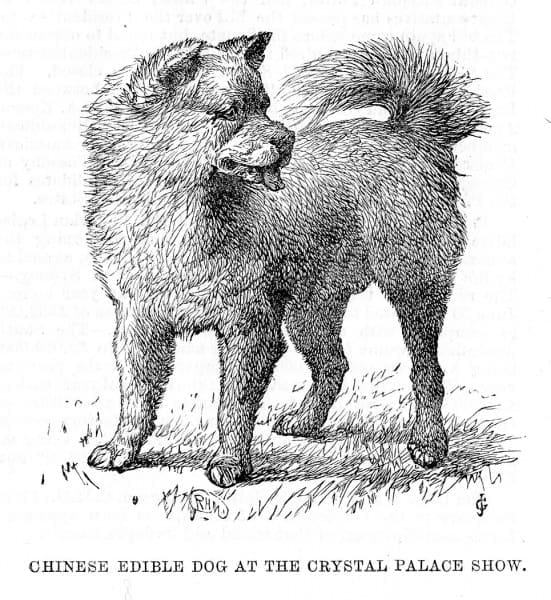

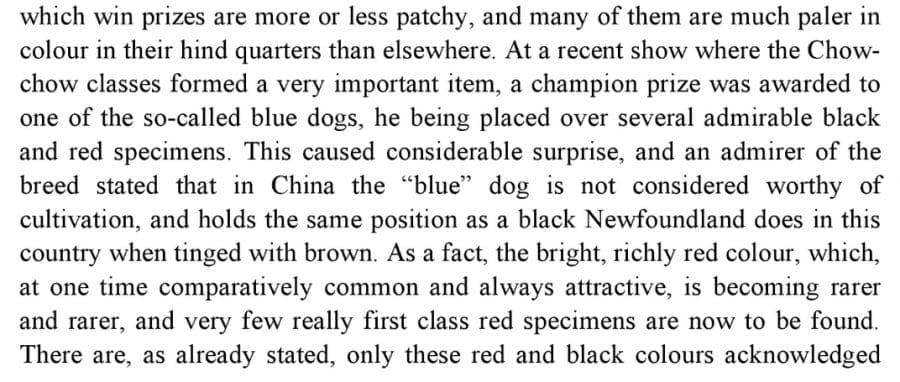
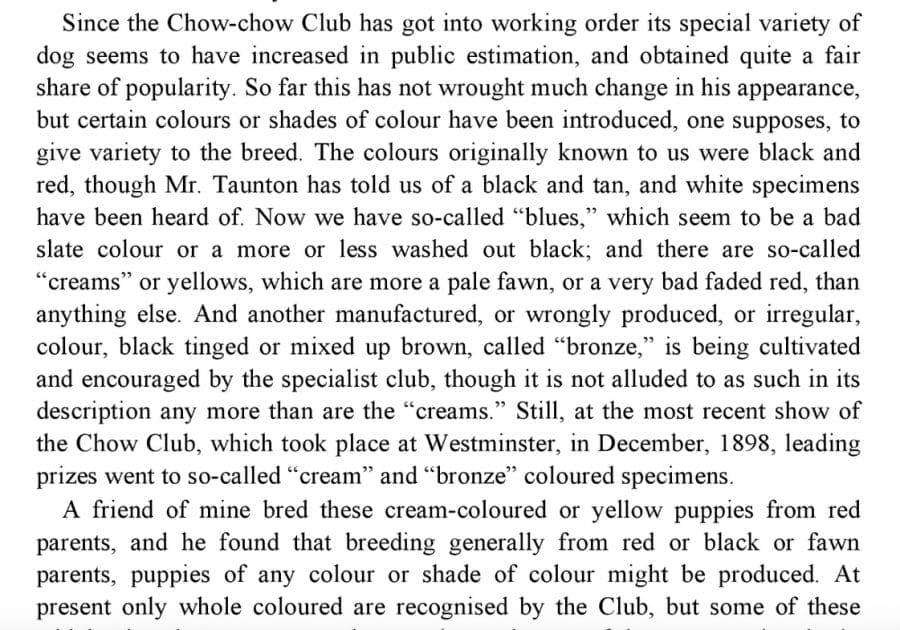
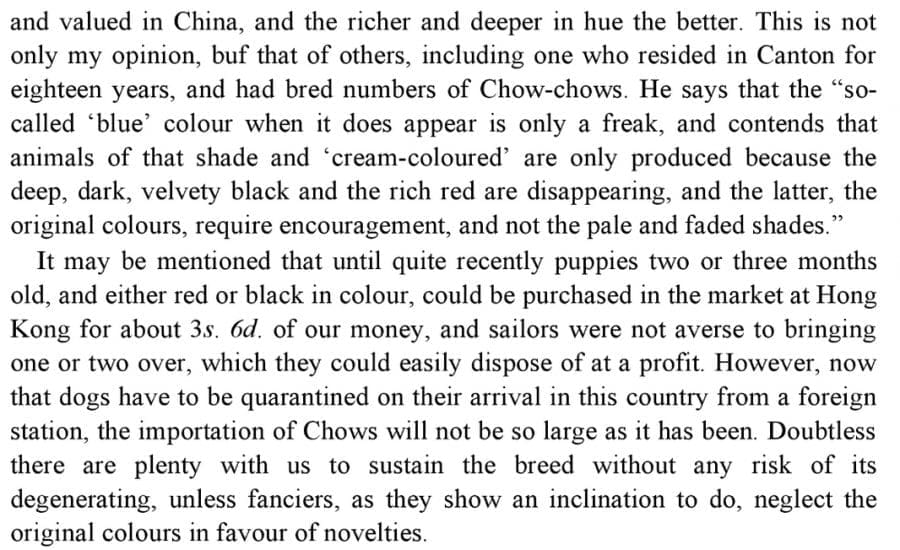
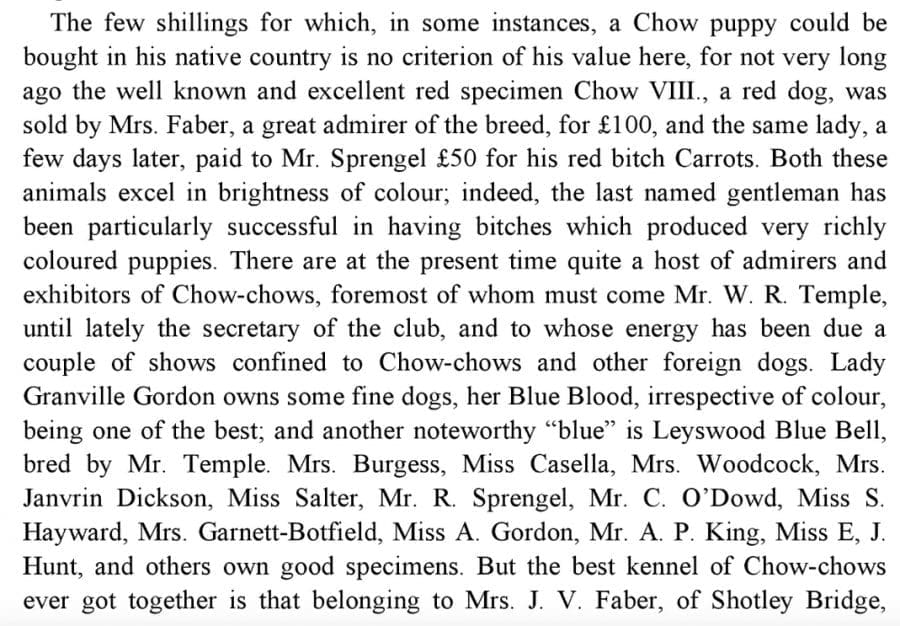

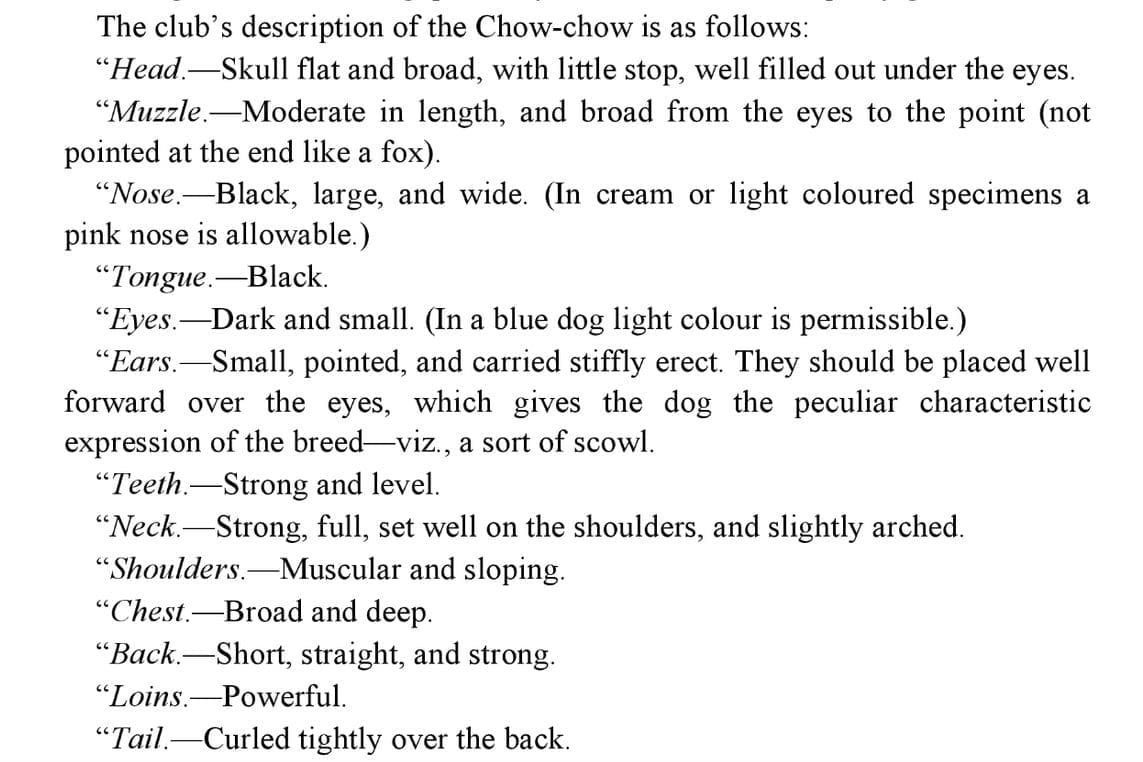

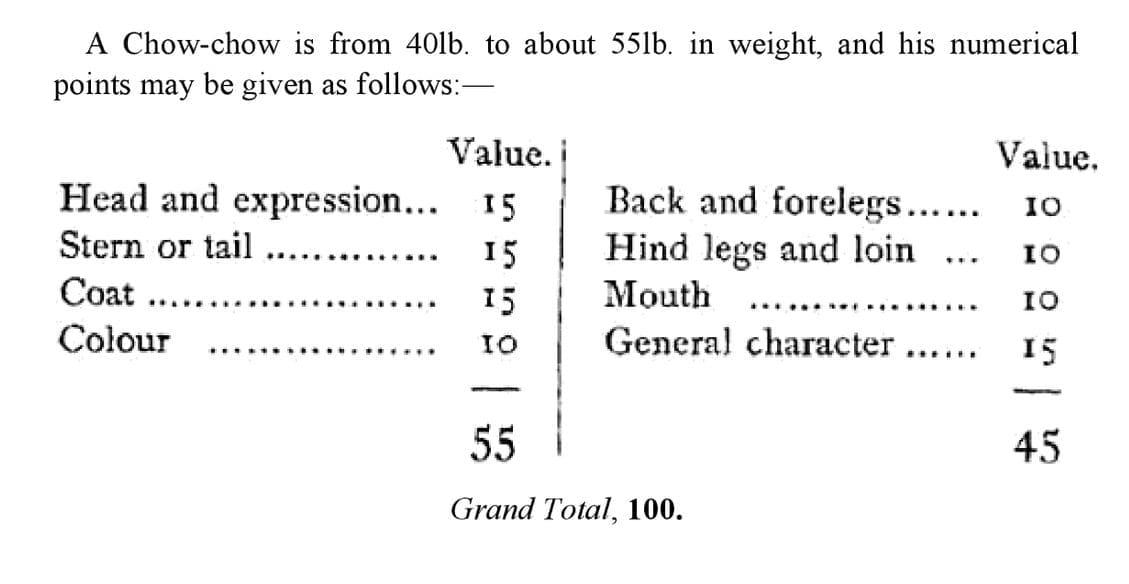

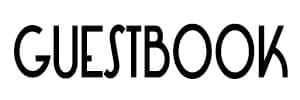
I did notice that the author did not report fondly on the variance of colors then being produced other than the red and black. Could this possibly be some part of the beginnings of penning a standard that did not include the fad colors of the day for many reasons yet uncovered fully>?????
Bill thank you for your comments which prompted me to add the rest of the article and links to all the Standards that apply to the article. Additions as follows:
“THE ARTICLE CONTINUES WITH THE FIRST 1906 CHOW STANDARD BASED ON THE DOG PICTURED ABOVE CHOW VIII
It is important to note that in 1925 the references to the various colors was removed from the 1925 STANDARD
The listing of acceptable colors was returned to the 1986 STANDARD for the reasons the author cites about 100 years prior
Very interesting article! I love your work, Sandra!
It is very interesting to read when the author says “manufactured” colors – you can nicely see the lack of knowledge regarding genetics and the existence of mutations – recessive, dominant ones – that give you blue, fawn, brown and cream is not clearly understood. I like the standard of 1906 which gives us really guidance regarding the original Chow, how he looked like and about the present colors which were all accepted, if the were whole-colored and not in patches. This indicates that existence of brown and also brindle Chows – why else would the patched color be mentioned. Very interesting! I am looking forward to reading more of this old material! 🙂
None of the standard colors are “manufactured”. They are all red or black variations. Recessive ee red comes in all shades including WHITE. I do not find it odd that the West would not known about the dilutions in the Chow since it takes two of the recessive dd gene to produce the dilution. No, I would say the modern day Chow is the same color it always has been with dilution being more common because of inbreeding and purposeful breeding of dilute to dilute.
Hi Walter so nice you came by to read the article. What I take away from the author on “manufactured colors” is that when breeders did discover a mutation they ran with it, leaving the original colors as an afterthought rather than keeping the two original breed colors a priority.
The blue, cream and browns etc were colors he mentioned that the breeders chose to make fashionable which is why they included them in the first standard, despite the evidence that those colors were not desirable in the original Chinese imports that went to England and especially in China.
I have many many articles that describe what “patched” indicated on a chow. The term “patched” described a shaded dog, either blue or red who bears very distinct shadings on the britches , chest and tail, yet those colors are blended with the main body color.
Thanks so much for commenting Walter!
Sandra
Was there also an article you posted a few weeks ago by a gentleman who visited a monastery where the blue chows were highly treasured? Written a bit later, but it might indicate a greater variety of traditionalcolors than this author does?
Yes Paula it makes you wonder if the blues were so hidden at these monestaries that the author didn’t know much about them at that time. I also wonder if the blues were not desirable and “cast offs”, is that how the monks started taking them in for a special purpose? I would love to know more about why the monks chose blues. Zola had a theory about the monks blue chows possibly herding the blue sheep. Entirely possible since many herding breeds match their flock or herd to blend in.
Chow VIII is like the lion dog the old people talk about .